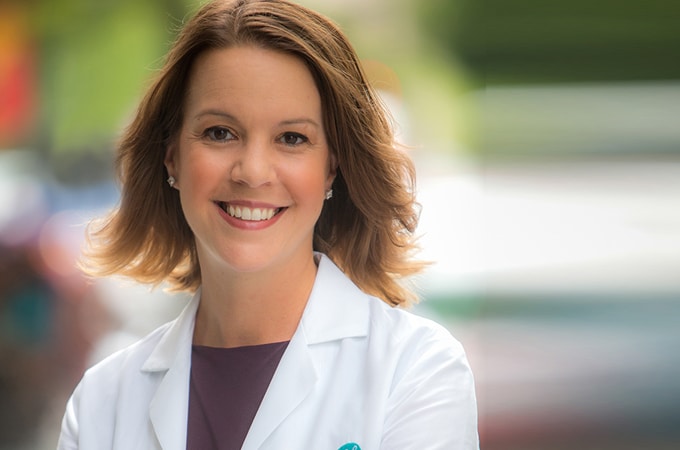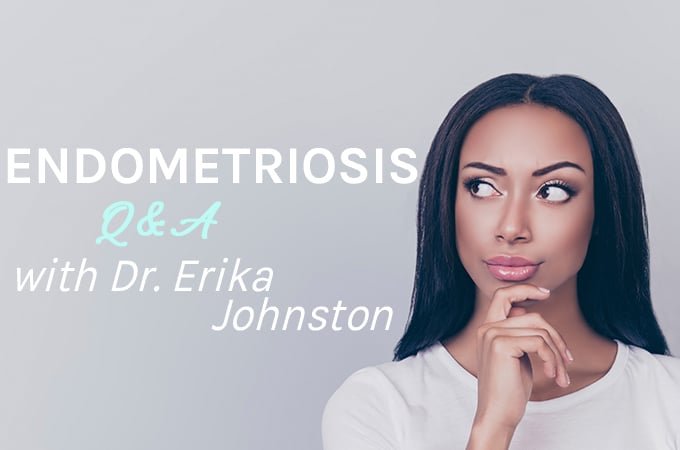
The movement to raise awareness for endometriosis is observed every March around the world. Endometriosis affects 1 in 10 women of childbearing age, which equates to nearly 176 million women and adolescent girls worldwide.
What is Endometriosis?
For women who have this condition, their endometrial tissue (the tissue lining the inside of the uterus) grows outside of the uterus. The endometrial tissue can attach to other organs in the abdominal cavity, such as the ovaries and the Fallopian tubes. The uterus will respond to this tissue the same way it responds to menstrual cycle hormones – it will swell and thicken and ultimately, shed. Unlike menstrual blood though, endometrial tissue has no place to be discharged from the body and may cause inflammation leading to the formation of scar tissue. While some women may not experience any symptoms, many will have painful menstrual periods, abnormal menstrual bleeding, or pain during or after intercourse. Endometriosis may also lead to infertility.
What are the Symptoms and Causes?
You may experience painful menstrual periods, abnormal menstrual bleeding, or pain during or after sexual intercourse. However, you may not have any symptoms at all.
The cause of endometriosis is still unknown. One theory suggests that during menstruation, some of the menstrual tissue backs up through the Fallopian tubes into the abdomen, where it implants and grows. Another theory suggests that endometriosis is a genetic birth abnormality in which endometrial cells develop outside the uterus during fetal development.
What Treatment Options are Available?
Your doctor may want to treat your endometriosis surgically, with medications, or with a combination of both. Medications are mainly used to treat symptoms of endometriosis, shrinking the endometrial tissue and affecting estrogen production. A decrease in estrogen production stops the growth of the tissue; however, surgery is the best option. Surgery involves removing the endometrial tissue from your ovaries or Fallopian tubes and can usually be done during a laparoscopy. If, however, there is severe disease, then your physician may recommend in vitro fertilization (IVF).
To watch our On-Demand Webinar on Getting Pregnant with Endometriosis, click here. During this free, on-demand event, viewers will learn about the causes and symptoms of endometriosis, and the treatments that are now available to help women conceive. With proper counseling and care, the chances of getting pregnant with endometriosis are high for most women.
How Can I Help Raise Awareness for Endometriosis?

Awareness about this disease is growing, with prominent events and organizations working to effect change. World Endometriosis Day on March 24, 2018 will be celebrated with marches around the world. The sponsors of these EndoMarches strive to get the word out that “…endometriosis is not just ‘bad cramps,’ but is actually a serious disease with severe medical consequences if left untreated.” The goals of the EndoMarches are to educate the public and medical professionals about endometriosis; to find a cure and develop non-invasive diagnostic testing; to improve health screenings among young girls and young women in public schools; and to educate the U.S. government and Congress in order to allocate funding for endometriosis.
To register for an EndoMarch in your area, click here. To discover more ways to donate and get involved, visit the Endometriosis Foundation of America.
Editor’s Note: This post was originally published in March 2015 and has been updated for accuracy and comprehensiveness as of March 2018.
To learn more or to schedule an appointment with a Shady Grove Fertility physician, call our New Patient Center at 888-761-1967.






